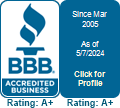
The price of success in show business is not always hubris. Often it is being too closely identified with an onscreen persona.
Buy, Value or Appraise Your Movie Posters and Entertainment Memorabilia
Bid or buy entertainment memorabilia for sale, value your item, or request a free appraisal to sell your collection.
In the bygone days of studio contract players, typecasting was the order of the day. Like a deck of cards, every studio had one of each kind in the suit. This was particularly true when it came to leading men in Hollywood.
The Matinee Idol
The most common type of leading man, these gentlemen (for better or worse) are known more for their swoon-worthy good looks than their acting chops. A mere flash of a toothy grin or a quick quip was enough to stir longing in the hearts of female theater-goers. Whether in the bedroom, the drawing room, or swinging from a chandelier, these romantic leads make a career out of being gorgeous and debonair. That is not to say they are not fine actors (some of them, anyway). Classically trained stage actor and member of the famous theatrical dynasty, John Barrymore was better known in film circles by his sobriquet ‘The Great Profile.’ Robert Taylor, similarly, was dubbed “The Man with the Perfect Profile.” His widow’s peak was the stuff of legends. His acting, sadly, was not. Matinee idols from the Golden Age of Hollywood include: Douglas Fairbanks, Robert Young, William Powell, Tyrone Power, Rock Hudson, and William Holden. Our pick for the greatest of them all is ‘The King of Hollywood’ himself: Clark Gable. His adoring fans never guessed that underneath the stardust was a man with false teeth and flapping ears that were always pinned back when the cameras were rolling.
Crooners & Hoofers
A variation on the matinee idol is the old fashioned song and dance man. This leading man could be relied upon to quite literally sweep you off your feet, look deep into your eyes, and croon about the moon in June. Notable Crooners and Hoofers include: Bing Crosby, James Cagney, Nelson Eddy, Gene Kelly, Roy Rogers, and Frank Sinatra. And the ultimate song and dance man is (Who Else?) Daddy Long Legs himself: Fred Astaire, whose virtuosity of performance and innovation of cinematic dance cannot be exaggerated.
Comics, Clowns, and Pierrots
Prat falls, silly faces, and old chestnuts predominate the performance of this leading man. With origins reaching back to Commedia dell’Arte, these cinematic Pierrots rarely (if ever) get the girl, stirring chiefly maternal feelings in the opposite sex. Not handsome enough to inspire adoration, they wise-crack their way into our hearts with tom-foolery and a naive inability to cope with reality. We love these masters of schadenfreude as one loves an idiot child, but despair of the neighborhood if they’re let out alone. A stock character since the infancy of moving pictures, such silent comic stars as Buster Keaton, Harold Lloyd, and Fatty Arbuckle paved the way for the comic stylings of Jack Haley, Bob Hope, Tony Randall, Jack Lemmon, and Jerry Lewis. Our pick for the classic comic lead: Mickey Rooney, the darling little man we could never really take seriously.
Freaks and Creeps
This type of leading man makes us think twice before going out after dark. While technically sharing more in common with character actors, they deserve a place on this list because their specialized talents make them unforgettable stars…of a very specific type of movie. Sometimes love is on their minds, but it is certainly unrequited. Woe unto the sweet young thing who refuses the unnatural embraces of Boris Karloff, Vincent Price, or Christopher Lee. But for the greatest specter at the feast, look no further than Lon Chaney. A wizard at special effects make-up (before such a thing properly existed), this “Man of a Thousand Faces” was a master of the grotesque who both horrified and fascinated, evoking pathos alongside disgust. His films may be silent, but his performances are deafening. Continuing with his father’s legacy, Lon Chaney Jr. succeeded him as the King of Monsters.
The Everyman
Picture the boy next door all grown up. This leading man is not the pin-up idol of his glamour-boy counterpart. Polite and hardworking, the Everyman seeks a simple life, but is caught up in events larger than himself. He overcomes these obstacles by employing the home-grown perseverance and moral courage only small-town America can produce. Recognizing his mid-western, ‘aw shucks’ quality, the audience relates to this leading man as one of their own. For this reason, the Everyman was a central figure of cinema during the Great Depression, when the sight of a good man triumphing inspired the unemployed masses. These nice-guy champions of the common man embody the quintessential American male: likable and easygoing and strong in the face of adversity. The likes of Randolph Scott, Henry Fonda, Ronald Reagan, Joel McCrea, Joseph Cotton, Fred MacMurray, and James Garner all conform to type. But no one did down-to-earth better than Gary Cooper and James Stewart. Masters at homespun heroism, it is no surprise that Cooper and Stewart lived up to their onscreen personas. Cooper was an avid sportsman whose love of the outdoors led to a lifelong friendship with Ernest Hemingway. Likewise, Stewart was one of the most successful and highly decorated American pilots during WWII.
The Tough Guy
There is perhaps no type of leading man so associated with American cinema as the Tough Guy. This cultural icon is typically either a Cowboy or a Gangster. The tough guy lives by a code: he won’t be wronged, he won’t be insulted, and he won’t be laid a hand on. Western frontier or seedy city streets, the tough guy inhabits a tough world: sometimes he is good, sometimes not. Either way, you wouldn’t like him when he’s angry. This leading man forces the audience to occupy a space of moral ambiguity where even good guys cannot turn the other cheek. We are conflicted, identifying with men who commit terrible deeds, and secretly envying them. Classic tough guys who come to mind are: Tom Mix, Edward G. Robinson, James Cagney (That’s right, he’s on here twice), and Alan Ladd. But no American tough guy can compare to the likes of Humphrey Bogart and John Wayne. One imposingly tall with a manner and fists like shovels, the other hard-boiled and jaded and too clever for his own good. Unforgettable paradigms of the American tough guy, the machismo of ‘Bogie’ and ‘The Duke’ has passed into legend.
The Angry Young Man
The successor to the Tough Guy, this new type of leading man is a product of post-WWII disenchantment. Portraying the same frenetic energy and rebelliousness onscreen that Elvis captured in his music, the Angry Young Man is a nonconformist, a lone wolf, and certainly a troublemaker. He rebels against stagnate convention, longing to be “free to do what we wanna do.” Heroes to the young generation, but juvenile delinquents to its parents, these intense young men like Montgomery Clift, Marlon Brando, and Peter Fonda have charisma in spades. Rebel Without a Cause star James Dean is often considered the poster child for this leading man, exuding teenage angst and social alienation in his casual yet frustrated posture. But our favorite angry young man is the one who channeled his anger into a force for change: Paul Newman. Known almost as much for his philanthropy as his acting, Newman’s onscreen anger could take down any contender. And their old man.
The Heavyweight
This type of leading man is rarest of his breed. The Heavyweight is an actor so supremely talented, he can play any role. This unicorn immediately lends gravitas to any production, his performance improving the material. There have been a few greats, and it is not possible to choose among them because each, in a way, was his own type: Spencer Tracy, Burt Lancaster, Kirk Douglas, Robert Mitchum, Gregory Peck, Orson Welles, Charlton Heston, George C. Scott, and Robert Redford.
Top box office draws in their own time, these legends of classic American cinema not only made great movies, they helped establish the idea of the American male in the public consciousness. Today actors have the freedom to choose more dramatically versatile roles to avoid typecasting. But if you pay close attention, you’ll recognize their modern counterparts next time you buy a movie ticket.
Until then, all you film buffs are welcome to check out our July 25-26 Vintage Movie Posters Auction. Go on. Make us an offer we can’t refuse.
By Holly Culbreath


Leave a Comment